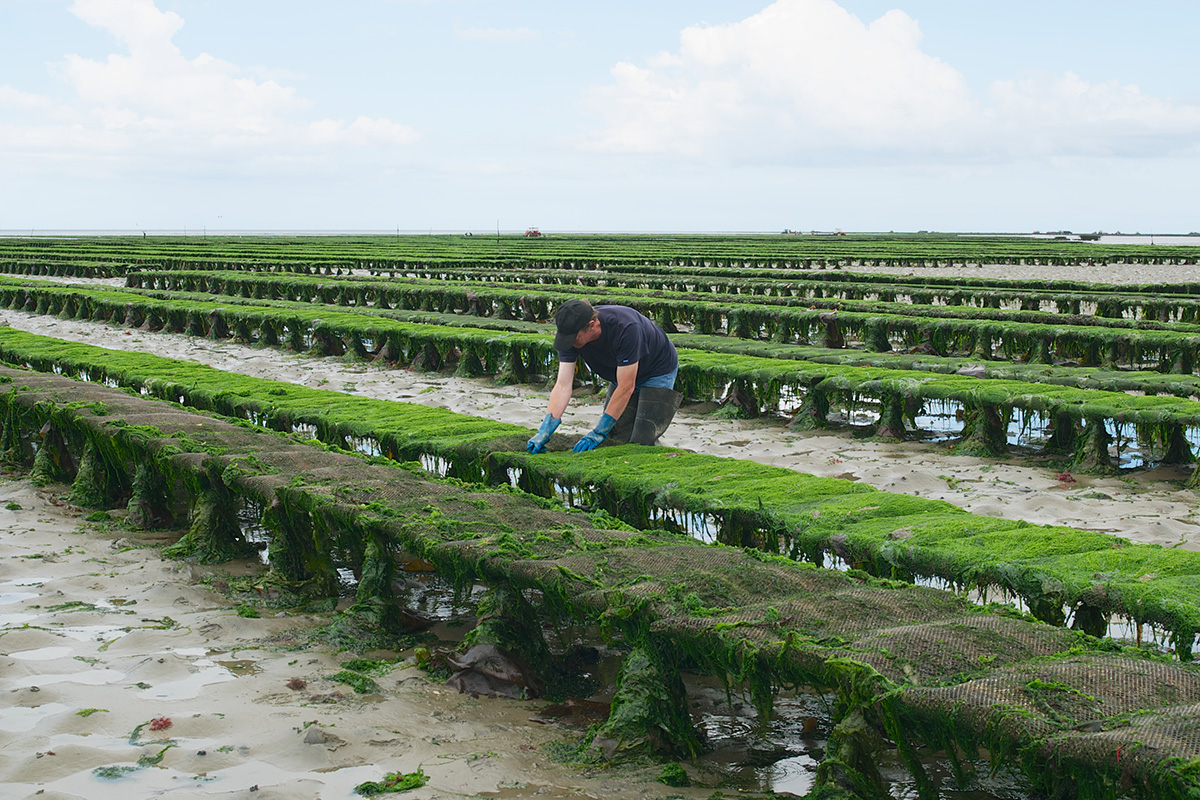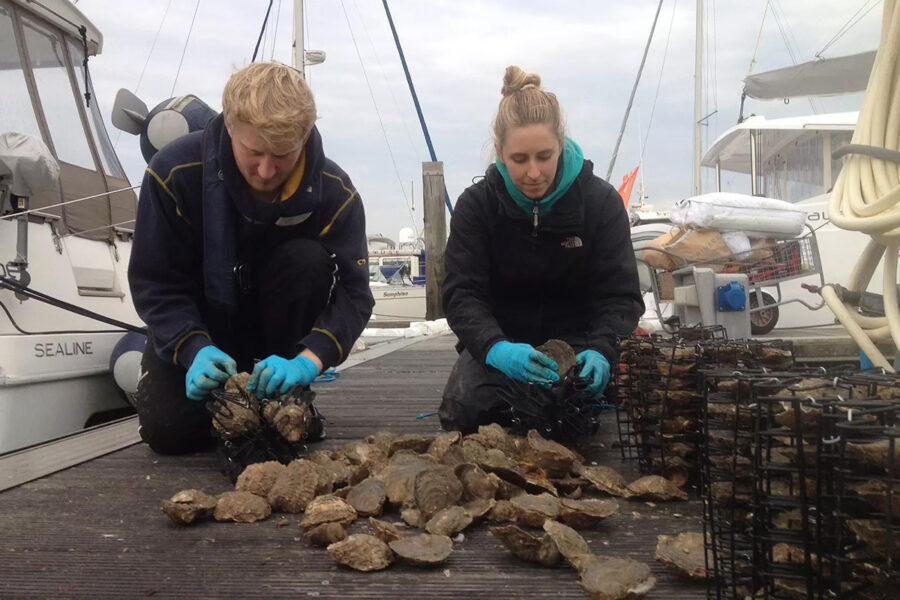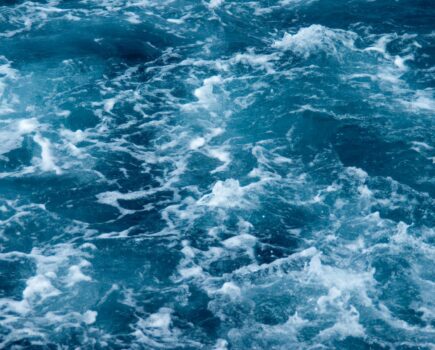New study has found that expanding Pacific oyster farming has minimal impacts on ecosystems – and some evidence of greater biodiversity around farms
By Tim Oliver
New research has found that farming Pacific oysters has few negative impacts on the marine environment, and can enhance biodiversity and water quality in UK waters.
Pacific oysters are classed as an invasive non-native species in England and Wales under the Wildlife and Countryside Act 1981, as wild populations of the species – originally thought unable to breed in the colder waters around the British Isles – have become established as far north as Scandinavia.
Natural England is concerned that farming Pacific oysters may further encourage their spread, and whilst legislation does not prohibit the farming of Pacific oysters, in reality, many would- be farmers are being refused permission to switch to the species.
The UK rigorously applies EU marine conservation legislation in defence of this stance, while European countries can farm Pacific oysters freely, putting the UK at a competitive disadvantage.
Farmers complain that the absence of a settled national policy means that different approaches are adopted towards Pacific oyster farming in different parts of the UK. What could be an expanding and profitable sector, they say, providing healthy seafood, employment and economic activity in coastal communities, is being held back.
The new research, a Fisheries Industry Science Partnership (FISP) project, was carried out in partnership with Envision Marine, Tethys Oysters of Pembrokeshire and the University of Essex, with funding from The Fishmongers’ Company’s Fisheries Charitable Trust and the UK government.
It used underwater camera footage, sediment sampling and ecosystem function tests from three Pacific oyster farms, one naturalised Pacific oyster reef, and one native oyster restoration site. The results were compared to control sites with similar environmental conditions but no live oysters.
The findings revealed minimal adverse environmental impacts from Pacific oyster farming. In some areas, seabed biodiversity was higher at oyster sites than in control areas. The farms were also found to contribute to nitrogen cycling – essential for ecological balance – and to be able to deal with ammonia inputs from the oysters themselves.

A French oyster farm: weaker interpretation of the same EU rules by French authorities means that French farmers produce 100 times more Pacific oysters than UK farmers each year.
The study says its findings contradict concerns about potential environmental damage. “Amid regulatory uncertainties concerning invasive species, the study supports the industry’s call for balanced policy support, with potential for a revised, nuanced regulatory framework to embrace oyster farming’s sustainability benefits, enabling a boost in production of this low footprint, high value, nutritious seafood,” say the researchers.
Andy Woolmer, an oyster farmer from Angle in Pembrokeshire, said: “We’ve always known that our oyster farms are a force for good in the marine environment. This study finally gives us the data to prove that we’re enhancing biodiversity and improving water quality around us for everyone’s benefit.”
Another oyster farmer, Tim Edwards from Bantham in Devon, said: “Our goal has always been to work in harmony with nature. Seeing birds, fish and even marine mammals thrive around our farms is incredibly rewarding.
“It’s no surprise to us that the study shows that sustainable oyster farming is not just a livelihood for us, but a way to positively enhance the marine ecosystem in the estuary.”
The study also revealed the difficulty of restoring populations of native oysters. The restoration site investigated had been restocked with both large and small native oysters in the past, but surveys could only find large ones, possibly indicating poor survival of smaller individuals.
Whilst a small number of traditional fisheries for the native oyster continue, many efforts to restore once prolific fisheries continue to face difficulties, particularly with encouraging successful spatfall of native oysters – though it is widely accepted that this is not due to competition with the Pacific oyster.
An earlier study by Essex University found that in 2018, England and Wales produced only 1,000t of Pacific oysters, compared to more than 100,000t in France. The English Aquaculture Strategy aims to increase Pacific oyster production to 5,000t by 2040. The study calculated that this has the potential to generate an additional £10m of turnover in coastal economies – but says this is ‘still modest’ compared to neighbouring countries.
The full report, ‘Ecosystem Benefits of UK Oyster Aquaculture Sites’, can be accessed here.
Shellfish Association of Great Britain: ‘Pacific oysters are here to stay’
David Jarrad, chief executive of the Shellfish Association of Great Britain, said the study was one of many attempts the sector had made to try to persuade Defra and other government agencies to accept Pacific oysters in aquaculture.
He said they were introduced into the UK about 60 years ago and were not expected to breed, but they had done so and had spread northwards. “That is going to happen regardless of what we do in the industry,” he told Fishing News.
“Cefas research suggests they will be as far north as the Faroe Islands by 2050, so what’s the point of sacrificing the industry now?
“Defra argues that they’re not closing down oyster farms, but Natural England is insisting that we use triploid oysters – a sexless oyster with three sets of chromosomes. Triploid oysters have three sets so they can’t breed, and Natural England says that’s the answer, and we should be using triploids.
“But that doesn’t have any effect on the wild oysters around the coast – and also at the moment we don’t have any triploid oysters in the hatcheries, so none of the oyster farms in 2024 mandated by Natural England to only use triploids can get any seed – so it’s a crazy situation.
“The bottom line is we have a breeding population of gigas oysters on our south coast; to the east we have breeding populations up as far as Holland, the north German coast and Scandinavia. To the south we’ve got Belgium and France, and to the west we’ve got Ireland.
“They’ve all got breeding populations, and when they spawn, the larvae can travel 200 miles in the water column. They are here to stay, and we need to make the best of it.”
Pacific oyster farms deliver ‘a massive ecosystem service’ that benefits the marine environment, clean the water and are a carbon and nitrogen sink, he said. “What’s not to like?
“We are working under the same legislation as our European neighbours, and they have found a way of accepting the Pacific oyster as being compatible with the same European legislation that we are saying they are not compatible with. It’s rather typical of the UK to be gold-plating the regulations.”
This story was taken from the latest issue of Fishing News. For more up-to-date and in-depth reports on the UK and Irish commercial fishing sector, subscribe to Fishing News here or buy the latest single issue for just £3.30 here.
Sign up to Fishing News’ FREE e-newsletter here.
Image credit: Blue Marine Foundation








